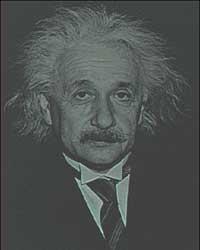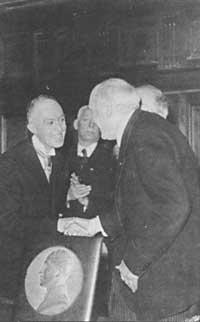Passage from quantum physics to classical physics
1997/12/01 Ikonicoff, Roman Iturria: Elhuyar aldizkaria
Scientists Serge Haroche and Jean-Michel Raymond, who work in the Parisian organization ENS or “Ecole Normale Supérieure”, have conducted an interesting study in the laboratory with the help of their team. The results were published in the journal “Physical Review Letters” of the American Physical Society, which indicates that there is a physical phenomenon called “quantum dismissal”. This process seems to ensure the transition from an infinitely small world (the world of quantum physics) to our world (the world of classical physics). It is, therefore, the union between both worlds.

In the last seventy years physicists have discussed our ability to “understand” the microscopic universe that describes quantum theory. Einstein, for example, thought quantum physics was mathematically straight, but did not consider certain strange phenomena he described. Following these strange phenomena, Richard Feynman said: “Quantum physics no one understands”. However, in the ENS essay they have just seen the bridge between the microscopic world and the macroscopic world.
Relationship between the microscopic world and the macroscopic world
The difficulty to unite these two worlds lies in the particular logic of quantum physics. Their laws are independent of the principles of ordinary people. In the quantum world, the same particle can be found in two places simultaneously (principle of uncertainty). In addition, any microscopic particle is both a wave (wave/corpuscule duplicity).
Therefore, how can we relate the elementary particles that are governed by the laws of quantum physics with the macroscopic object formed by the set of many of them (this magazine, for example)? And it is that this magazine is not in two sites at a time and is not object and wave at a time.

It is clear that when quantum level changes at macroscopic level the behavior of matter changes and French scientists have seen how this change occurs.
Suppose an elementary particle is found simultaneously in two different places. You can shoot an electron from the atom without knowing if you are going to go left or right. In fact, according to quantum theory, it is launched simultaneously in two senses. In this quantum state there are two superimposed states: the left and the right. However, if we had two meters (one on the left and one on the right), in a very short time only one device would detect the electron (the one on the right, for example). And have we thought that the electron has come out in two directions because we did not know the true direction until we detected the gadgets? According to quantum physics no. The electron has been released at the same time on both sides because the two states (left and right) were united and could not be separated.
At the time of the measurement there has been a “dismissal” in the superimposition of the “left” and “right” states in favor of the “right”. The instruments of measurement have allowed us to move from quantum “reality” to classical “reality.” The measurement itself changes the nature of the phenomenon. Its quantum coherence is lost and becomes classical. That is why it is difficult to detect the process of dismissal.
Quantum Reality
Although many scientists believe that it is not possible for a single particle to be in two places at a time in reality, they have “seen” the two overlapping situations in the National Institute of Standards and Technology of Colorado of the United States. However, the researchers did not see that conjunctural disadvantage for a single occasion and could doubt the real existence of this process. However, the ENS team has detected this process of dismissal and has undoubtedly demonstrated that it is not a mere mathematical model, but a “reality” of the microscopic world.

Gai honi buruzko eduki gehiago
Elhuyarrek garatutako teknologia





